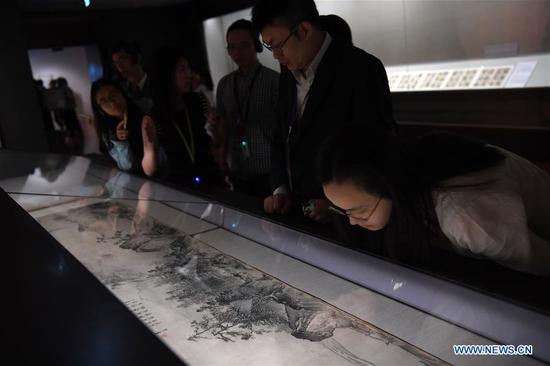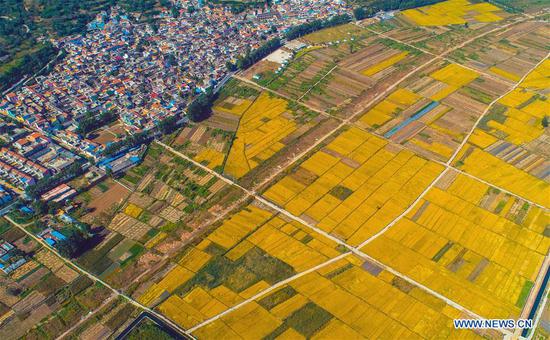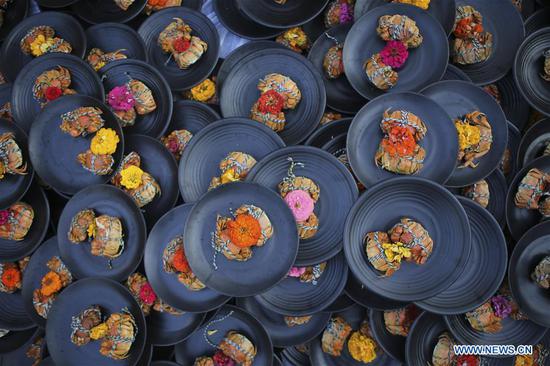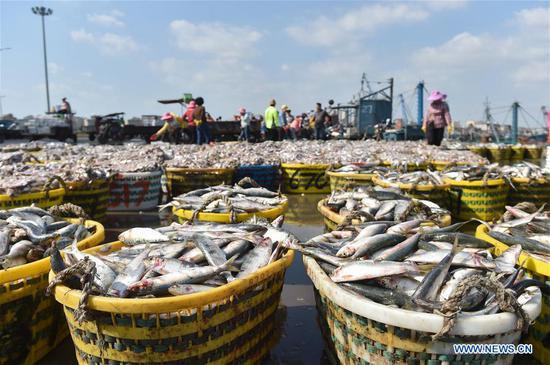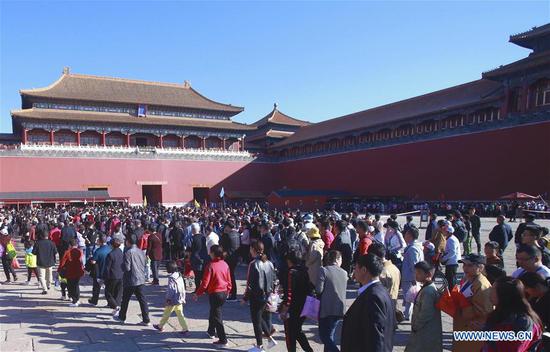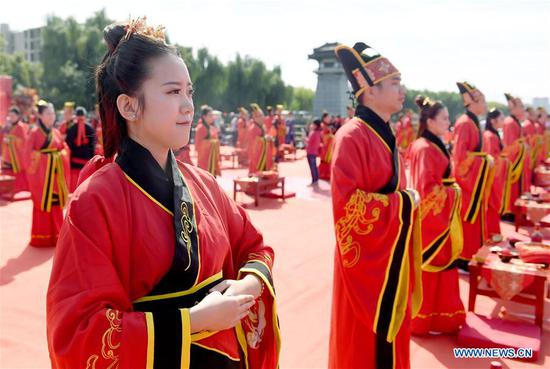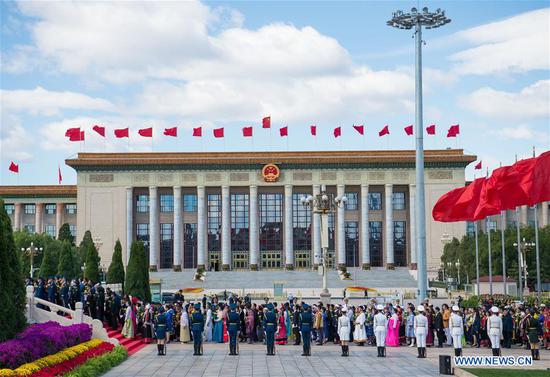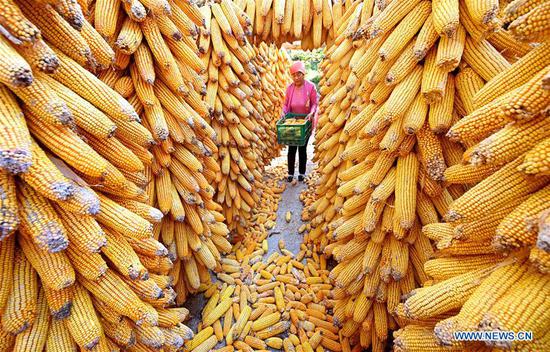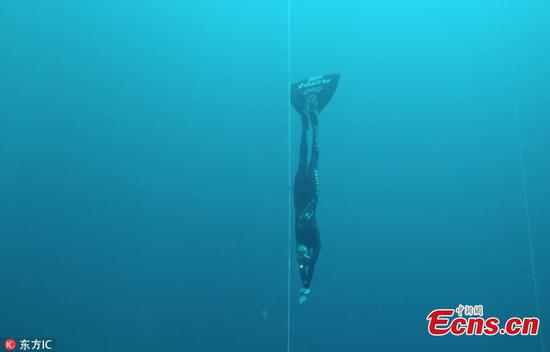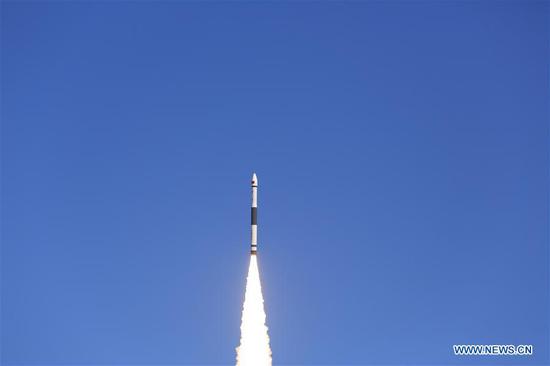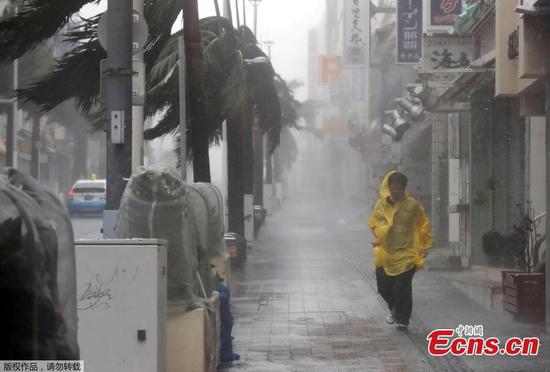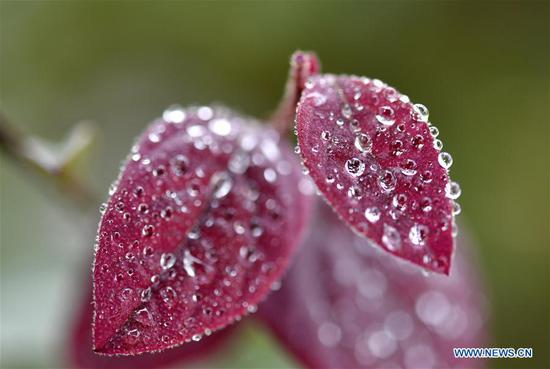A discovery made by British and Chinese researchers has taken scientists one step closer to the generation of clean energy by using sunlight to split water molecules, just as plants do through photosynthesis.
Researchers from the University of Liverpool, University College London and East China University of Science and Technology have synthesized a new organic material that works with sunlight to separate water into its constituent elements, oxygen and hydrogen.
Pure hydrogen is a zero-emission fuel that can be used in engines or batteries, so the breakthrough could lead to an abundant clean energy source for the future.
"Ideally, in the future we will be able to use such materials along with sunlight and water to produce large amounts of hydrogen," said Wang Xiaoyan, a researcher in the chemistry department at the University of Liverpool, and lead author of the study published in the journal Nature.
"It's early and we are in the fundamental research stage, but our study is one step toward this," he added.
Hydrogen is already used as a fuel for spacecraft and in some ground transport vehicles. The element is abundant on earth in compounds such as water and fossil fuels, however it is rarely found in its pure form.
Current industrial methods of hydrogen production have significant drawbacks. Hydrogen can be separated from oxygen via electrolysis, which involves passing an electric current through water, but this process is energy intensive.
The most common method of producing pure hydrogen is through steam-methane reforming. At high temperatures, methane-formed of hydrogen and carbon-reacts with steam to produce carbon dioxide and hydrogen. Since this process generates CO2, which is a greenhouse gas, it is not considered a clean method of fuel production.
Scientists have long marveled at the ability of plants to split water molecules using sunlight during photosynthesis. Several researchers have successfully mimicked photosynthesis through a process called photocatalytic water splitting, although so far no methods have proved efficient enough to be commercially viable.
The material synthesized by Wang and his colleagues is a promising new development. In photocatalytic water splitting, sunlight hits an organic or inorganic catalyst, generating electrons and holes which split the water molecule into hydrogen and oxygen.
Inorganic catalysts are generally more efficient than organic catalysts, however it is far simpler to make water-splitting devices using the latter.
The team at Liverpool has managed to synthesize an organic sulfur-based material that essentially allows for the best of both worlds. It lends itself more easily than inorganic catalysts to the manufacture of water-splitting devices, and is more efficient than most known organic alternatives.
Wang's research is partly funded by the China Scholarship Council, which runs a program that attracts PhD candidates from China to carry out their studies at the University of Liverpool Materials Innovation Factory, also known as the MIF.
"It is a good example of the vital need to hire the best researchers from all over the world, and to collaborate with teams in other countries," said Andrew Cooper, director of the MIF and academic lead on the new study.
"Top-level science is an international endeavor," Cooper said.










